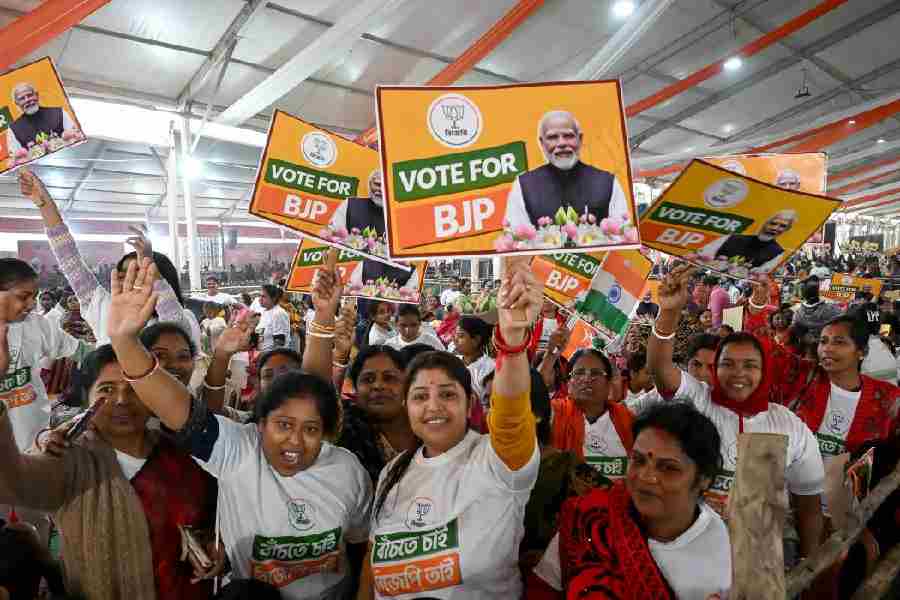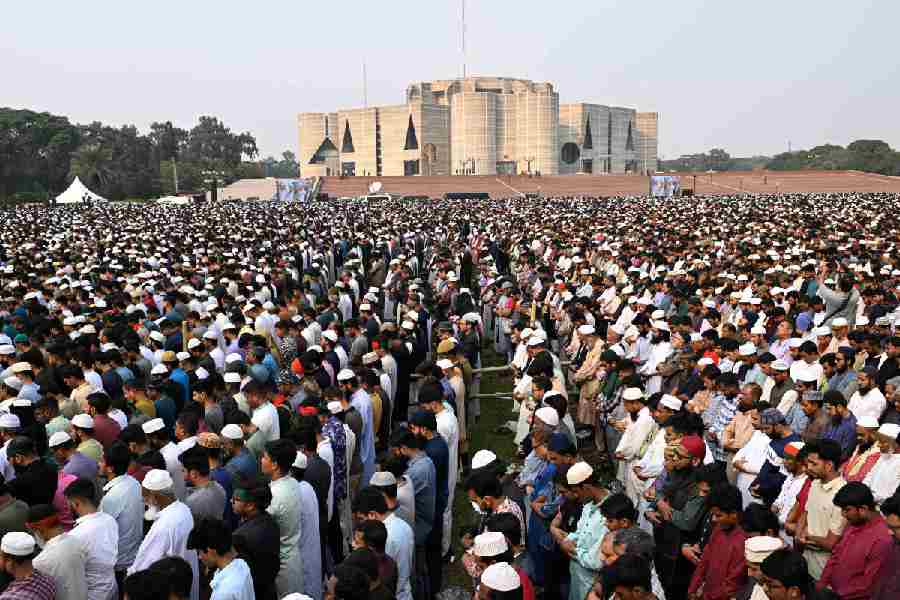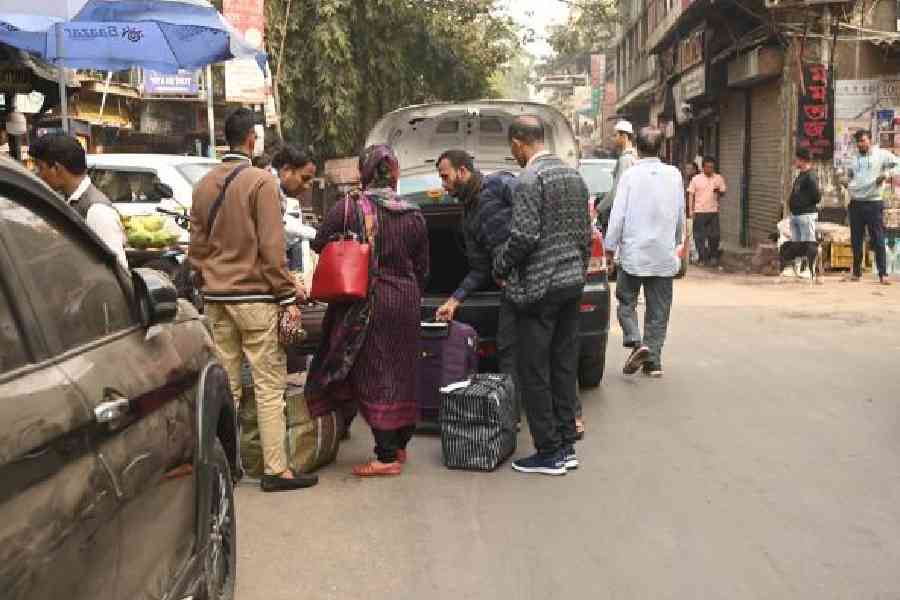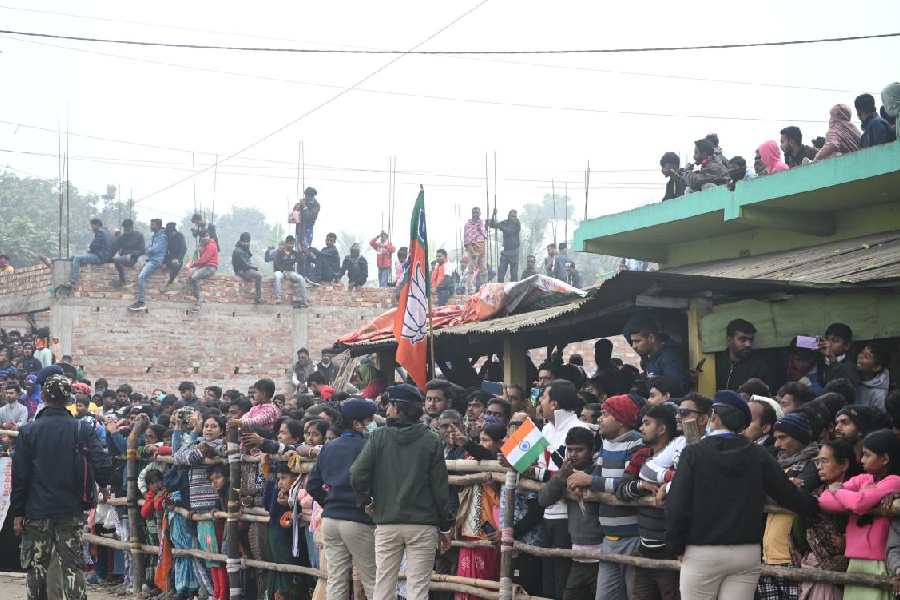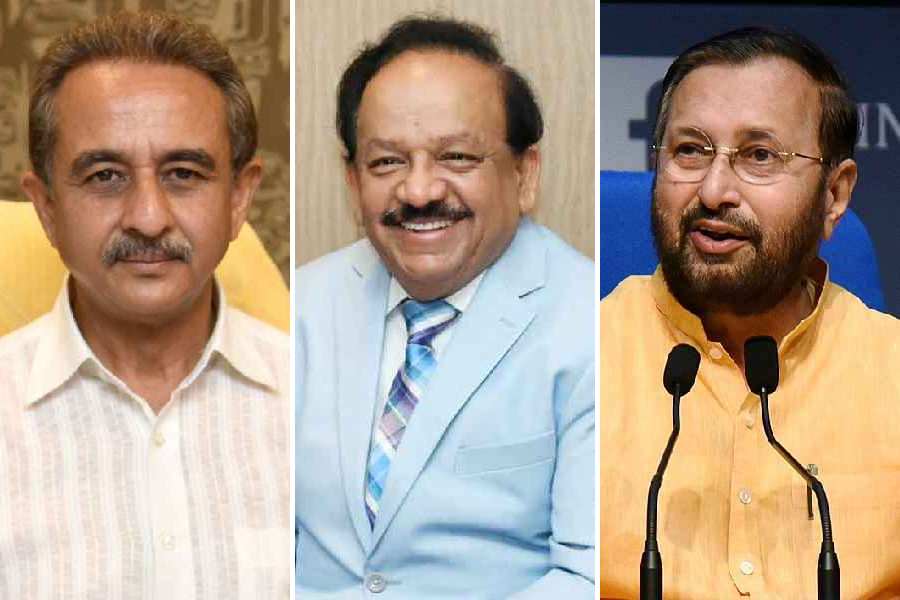 |
 |
| Girls walk amid morning showers and (above) two women take shelter under umbrellas to beat the afternoon sun at Kargil Chowk in Patna on Wednesday. Pictures by Deepak Kumar and Jai Prakash |
The city recorded just 24.6mm rainfall this June, scripting a record of minimum precipitation for the month over the past 50 years and sparking a water scarcity scare.
Indian Meteorological Department (IMD), Patna, on Wednesday declared that the rainfall this June in the town area of Patna was 24.6mm — all-time lowest for this month in the past 50 years. Earlier, the June of 2005 was the driest in the past 50 years. The rainfall stood at 31.5mm then.
Ashish Sen, the director (radar) of IMD, Patna, told The Telegraph: “The rainfall recorded for the month of June this year has been 24.6mm. It is the all-time lowest rainfall for this month. Such scanty rainfall can be attributed to poor pre-monsoon activity and delay in the arrival of monsoon. Pre-monsoon thunderstorms are the major contributor to the rainfall in June.”
Sen said: “This year, only two pre-monsoon thunderstorms were recorded in the Patna town area on June 2 and 18. As a result of such poor pre-monsoon activities, the total pre-monsoon rainfall in the past month stood at 15.5mm. With 9.1mm of monsoon rainfall, the total precipitation in the month increased to mere 24.6mm.”
Water experts in the city said the groundwater table could deplete because of the scanty rainfall. “Majority of the population in Patna is dependent on the groundwater table for the fulfilment of all kinds of water needs. On top of this, rainwater harvesting is hardly practised in the city. Thus, monsoon rainfall is the only source of groundwater recharge. With poor rainfall in June, the groundwater table was virtually not recharged,” said Ashok Ghosh, the head of the department of environment and water management, AN College.
The water-level could dip significantly this year because prior to the “dry June”, the state capital recorded the highest average maximum temperature for the month of May. “The average maximum temperature for May, 2012 was 40.7°C, the highest in the past 30 years. The average maximum temperature for the month is 38.9°C,” said Sen.
Weather scientists claimed that June was comparatively dry this year across the state. Abdus Sattar, the assistant professor of meteorology at Rajendra Agriculture University, Pusa, told The Telegraph: “The rainfall in the month of June in the previous year was around 300mm in Samastipur. But it came down to around 90mm this year. Similar conditions have been observed in several other districts.”
Sattar claimed that such an unusual dip in the rainfall was because of the climate change. “The climate change has become a reality. It is leading to extreme rise in temperature in the summer month of May and alarmingly scanty rainfall in the monsoon month June. Such abnormal macro level weather changes would continue to occur in the future as well,” said Sattar.
Pradhan Parth Sarthi, a climate change expert in the department of environment and forests, government of Bihar, echoed Sattar. “The negligible depression (low pressure) formation in Patna in June can be attributed to an immediate impact of climate change. But the scanty rainfall in June can also be attributed to slight rise in the sea surface temperature of the equatorial pacific ocean region,” said Parth Sarthi.


